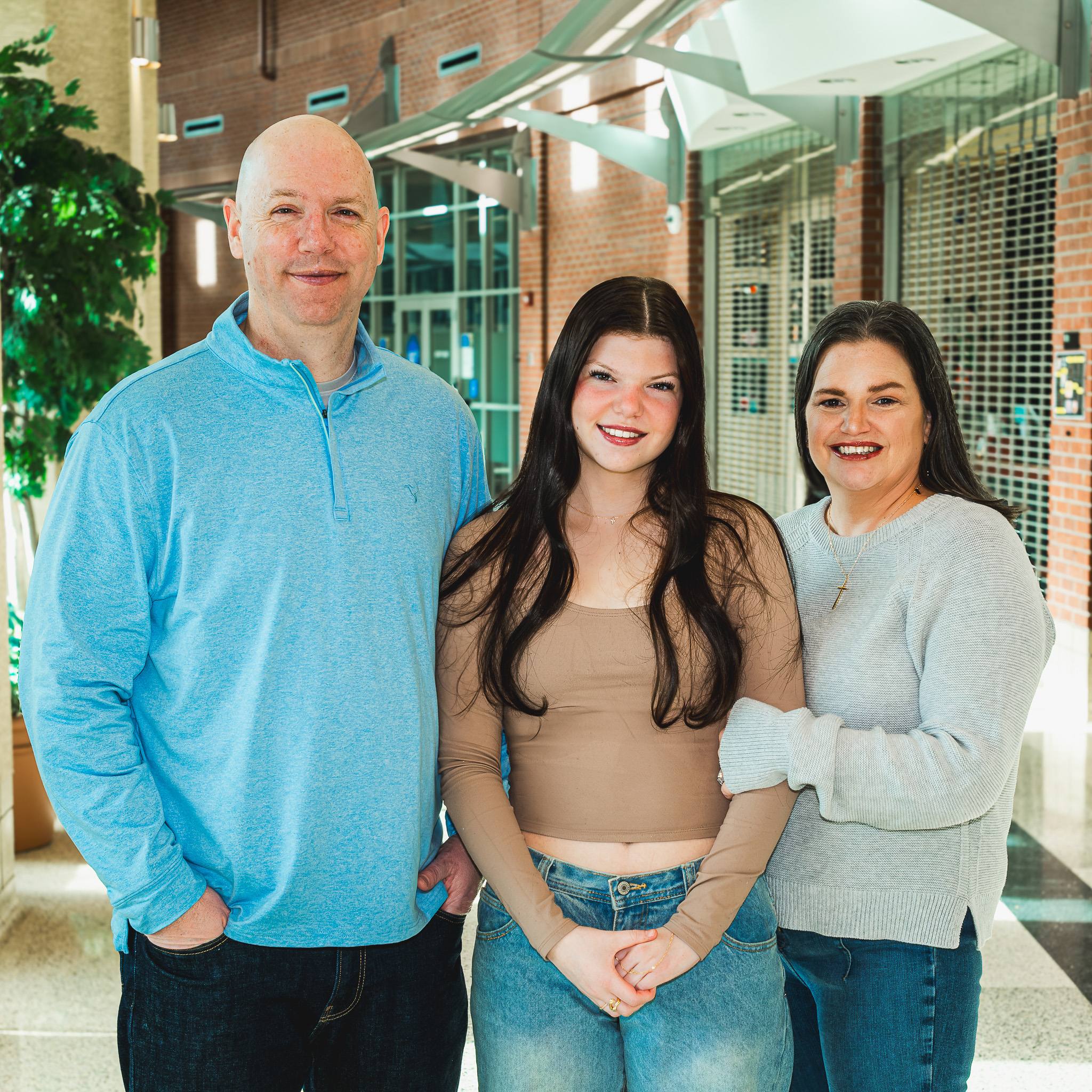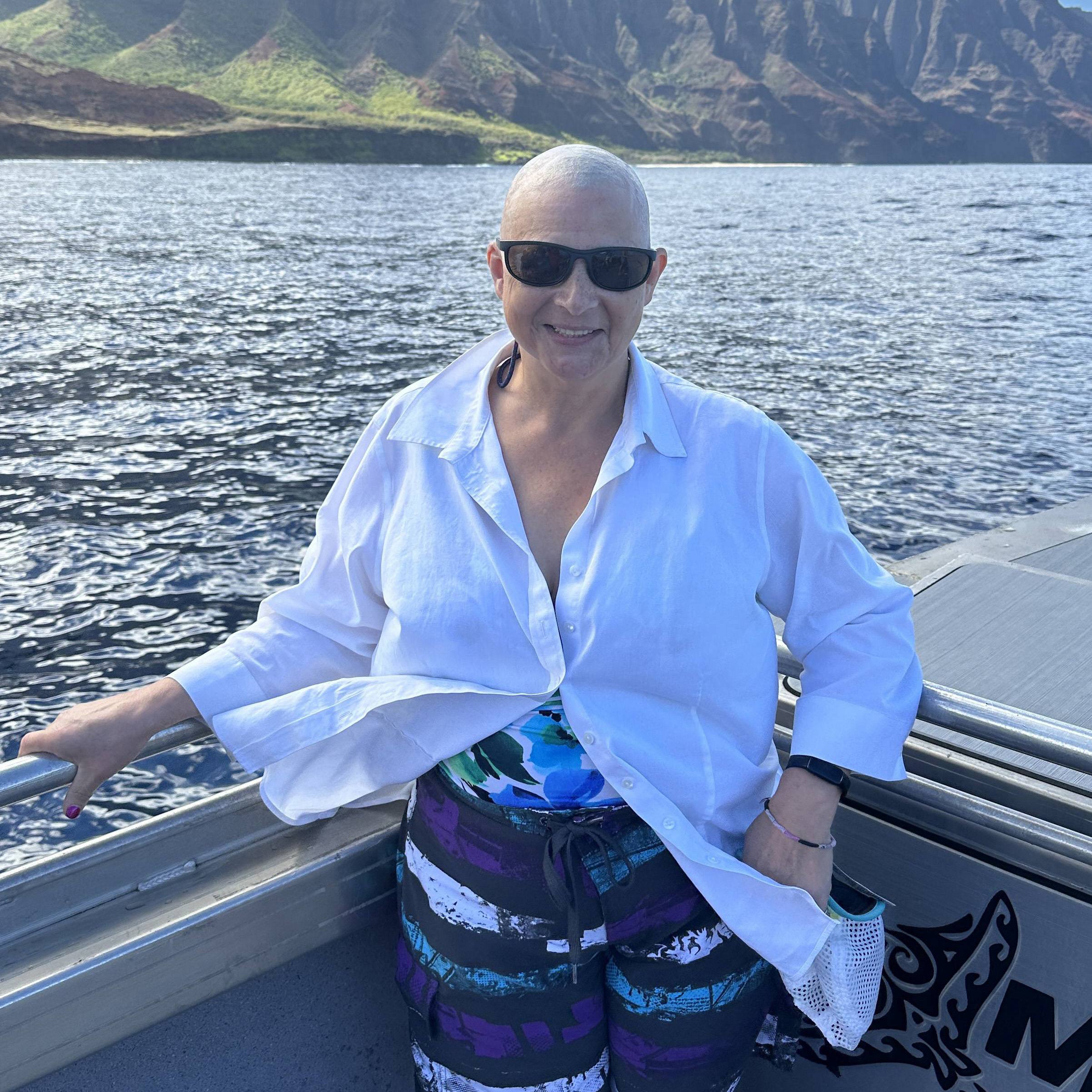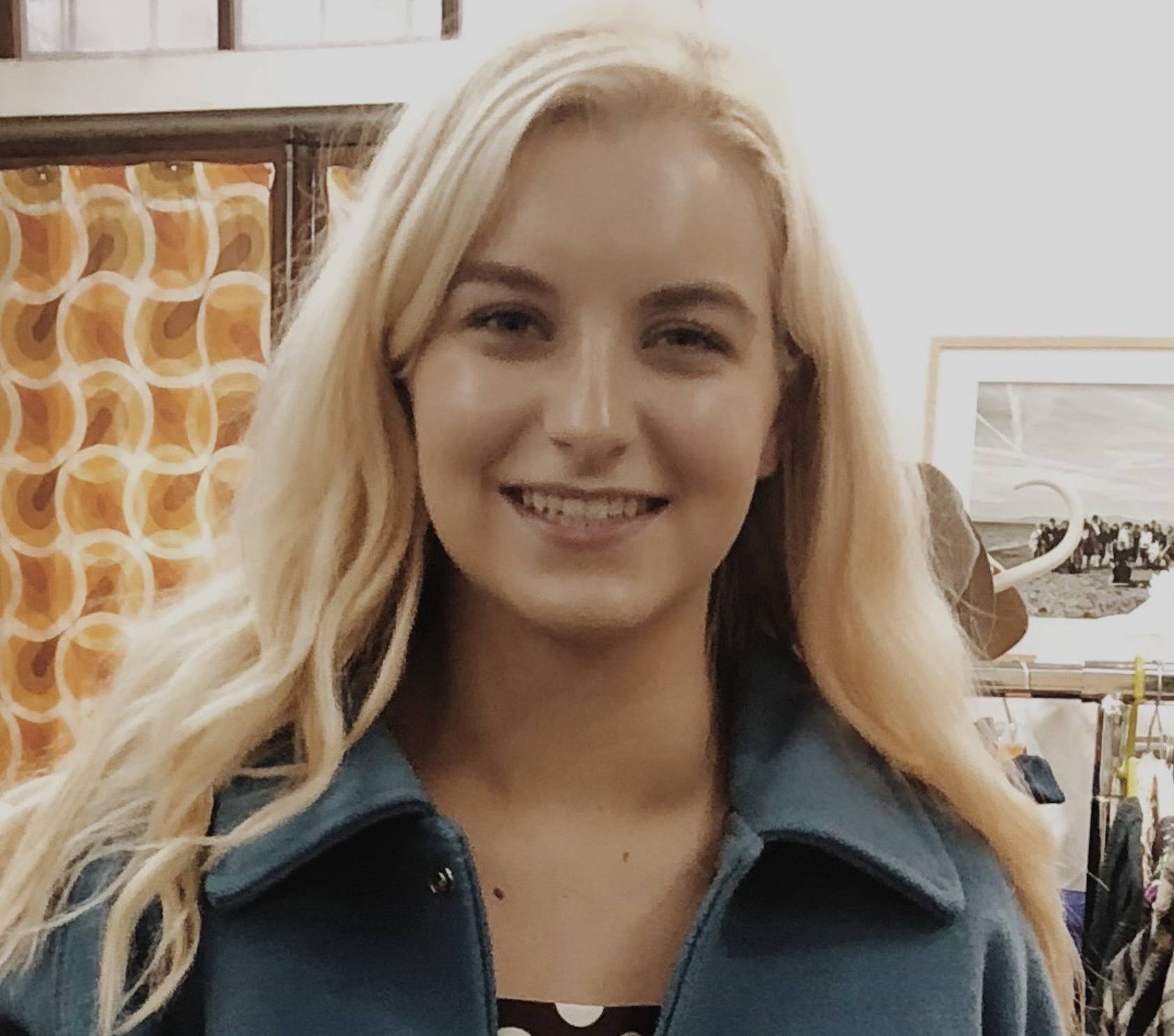When he was born 13 years ago, Connor Johnson was a "miracle baby,’ according to his parents. Kathleen and Curtiss Johnson had struggled for years to become and stay pregnant. They had given up hope, when they discovered they were nearly four months along.
The miracle of Connor’s life took on new poignancy in the fall of 2015, when the young teen was diagnosed with an aggressive form of childhood brain cancer. Despite the seriousness of the tumor, an intensive treatment regimen at Mayo Clinic’s Rochester campus involving brain surgery and proton beam therapy, provided Connor and his family the promise of a brighter future.
A mother’s instinct
Connor was a typical, sports-loving kid when he began having episodes of double vision and headaches. Having raised another teenager who experienced headaches during puberty, Kathleen chalked up Connor’s symptoms to adolescent growing pains — until one morning just before Thanksgiving. Connor woke that day at 5 a.m. with such extreme head pain it caused him to vomit.
“I knew something was wrong,” says Kathleen. “I didn’t think it was a brain tumor. I just knew something was going on.”
Connor’s pediatrician examined him and drew some blood. An MRI and an eye exam were ordered, but when Connor’s blood results came back normal, the pediatrician cancelled the MRI. The doctor also believed the eye exam unnecessary, Kathleen says.
“But something inside me said I wanted to keep the eye exam,” she says. “He had a lazy eye when he was little, and he’d had the double vision and hadn’t had his eyes examined for a couple of years.”
“I knew something was wrong. I didn’t think it was a brain tumor. I just knew something was going on.” — Kathleen Johnson
At the appointment, Kathleen recalls that the resident physician said nothing while examining Connor eyes. After a long look, he rose and stated that he needed to get the supervising physician. After his own inspection, that doctor reported Connor needed an immediate MRI. Connor’s optic nerves, which attach directly to the brain, were extremely swollen.
The MRI was done the Wednesday before Thanksgiving. After the scan concluded, Kathleen dropped Connor off at home and went to the grocery store. She began filling her cart in preparation for a houseful of holiday guests. Midway through shopping, her phone rang. It was Connor’s pediatrician.
“She said, ‘You need to go to the ER right away,’ but she wouldn’t tell me anything more,” Kathleen says. “Connor had a hockey game that night. I asked if he could still go, and she said, ‘No, you need to get to the ER right away.’ So I just left my full cart in the store.”
When the family arrived at Mayo Clinic Hospital – Rochester, Saint Marys Campus, Connor’s physicians shared the results of the MRI. A medulloblastoma had taken root in the back of his brain. It was a stage-four, egg-sized cancerous tumor that was pressing against his brain stem.
No time to waste
Typically, when medulloblastomas are discovered, they’ve advanced to a stage where treatment must begin immediately. Worried that Connor might have a seizure or develop a blood clot before the surgery, his physicians admitted him to the pediatric intensive care unit at Saint Marys.
Kathleen stayed with Connor that night and the following day. During the stay, Connor’s physicians met with Kathleen and Curtiss to discuss the scope of the operation to remove the tumor, which was scheduled for early Friday morning.
“They told us it was going to be a six-hour surgery,” Kathleen says. Then they discussed the risks. “They said they didn’t know if he would survive the surgery or not. They said he might not be able to walk or talk ever again after surgery, depending on what nerves were cut. They said his personality would be different, that he might not be able to think the same.”
At 7:30 a.m. the day after Thanksgiving, Kathleen and Curtiss walked their son to the operating room. The surgery lasted exactly six hours. Each hour that passed was accompanied by a phone call from the surgical room with an update.
“Those phone calls helped so much because they let us know he was alive, for one thing, but that he was doing good,” Kathleen says.
Dr. Rao would call to check on us at home. She didn’t have to do that. She just wanted to know how he was doing.” — Kathleen Johnson
In the recovery room, as a nurse attempted to rouse Connor and get him to speak, Kathleen firmly grabbed his hand and said, “Connor, it’s Mom. If you can hear me, say ‘yes.’”
“He said something else, another word, but he squeezed my hand so hard, like he was telling me to leave him alone. But it just felt like our prayers were answered when I could hear him talk.”
Compassionate, cutting-edge care
Three days after his surgery, Connor was released from the hospital. Being at home was initially a challenge. Connor needed a walker to help him move around. He also had physical and occupational therapy to aid his recovery. Support from his Mayo Clinic physicians helped the family manage the situation.
“He moved like a robot and didn’t have expression or emotions when we first brought him home,” Kathleen says. “But the doctors told us to be patient because it takes time for the brain to heal and for the nerves to reconnect. Dr. Rao would call to check on us at home. She didn’t have to do that. She just wanted to know how he was doing.”
The family met Amulya Nageswara Rao, M.B.B.S., Connor’s oncologist, after his surgery. She was confident they could create a successful treatment plan for Connor moving forward. With the right combination of treatments, including surgery, radiation and chemotherapy, medulloblastomas are among the cancers that often can be cured, she says.
“When we approach our kids, our goal is to make sure they have long lives ahead of them,” Dr. Rao says. “Therefore, everything we do, we tailor it in a way to minimize side effects.”
Six weeks after his operation, with his physical recovery well in hand, Connor’s treatment progressed to the next phase: a six-week course of proton beam radiation therapy.
“When we approach our kids, our goal is to make sure they have long lives ahead of them. Therefore, everything we do, we tailor it in a way to minimize side effects.” – Dr. Amulya Nageswara Rao
While conventional radiation therapy and proton beam radiation therapy have the same effect on cancer, proton beam radiation minimizes damage to healthy tissues. By directing electrically charged protons, which have been accelerated at two-thirds the speed of light, through a synchrotron, and using a patient’s imaging as a guide, physicians can precisely target the tumor with high bursts of energy that break apart the tumor’s cells beyond repair.
“With proton beam radiation, long-term side effects are much reduced,” Dr. Rao says. “This includes short-term memory loss, learning and cognitive productivity, and it also reduces the risk of a secondary tumor.”
Every day for six weeks, Connor would lie still on a table — initially for 90-minute sessions and later for 45-minute periods — to receive a directed beam of highly intensive radiation to his brain and spinal column.
In addition to radiation sessions, Connor began receiving chemotherapy to battle any residual cancer cells. Connor’s chemotherapy regime extends across at 10-month span and requires him to stay in the hospital to receive the treatment over a two- or three-day period. His last month of chemotherapy is scheduled for January 2017.
The importance of attitude
Dr. Rao, who treats about five or six children a year with similar tumors, says Connor’s personality made a big difference in his ability to tolerate his treatments.
“The thing about Connor is he’s very quiet, but once you explain to him the things he can to make this an easier road, he puts in all his efforts,” Dr. Rao says. “For example, many patients start losing weight during chemo. If they start losing weight, it becomes harder for them to tolerate the chemo, so I sat down with him and said we don’t want you to lose weight and he said, ‘What do you want me to do?’ and I told him. Two weeks later his weight was up.”
“I think he has the courage of an adult and the attitude of a child, and that probably helps him take everything we give him and make it look easy.” — Dr. Amulya Nageswara Rao
Though his treatments are unquestionably difficult, Connor has the ability to take them in stride.
“I think he has the courage of an adult and the attitude of a child, and that probably helps him take everything we give him and make it look easy,” Dr. Rao says. “But it’s not just courage, he has a very positive attitude about him and is someone who is always wanting to help others around him.”
Already his cancer experience has influenced Connor’s thoughts on his future.
“Right now, he’s talking about being a radiologist,” Kathleen says. “He wants to read X-rays and MRIs and find things, and help people that way.”
Whatever his future has in store, it will be one filled with gratitude and appreciation, Kathleen says.
“This has really made us realize how important life is and how every moment is special,” she says. “It just changed us all so much and taught us that the little things are the best things, to celebrate the little things.”
HELPFUL LINKS
- Read about the Mayo Clinic Cancer Center.
- Learn more about the Proton Beam Therapy Program at Mayo Clinic.
- Connect with others talking about living with a brain tumor on Mayo Clinic Connect.
- Explore Mayo Clinic’s Rochester campus.
- Request an appointment








